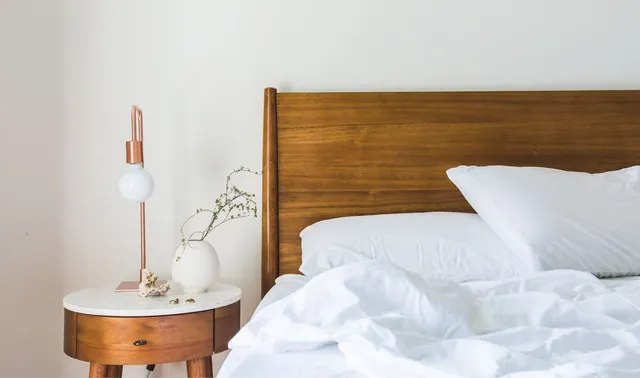Healthy sleeping positions
A good sleep is crucial for our well-being. However, lying down incorrectly can lead to back, neck and shoulder pain. In this blog post, we take a look at the best ergonomic sleeping positions and give you some tips that can help you improve your sleeping habits.

- Supine position: the right posture for the spine
The supine position allows the body weight to be evenly distributed and relieves pressure on the spine.
An additional cushion under the knees can reduce the strain on the lower back. This supports the natural curvature of the spine and relaxes the muscles.
In the first picture you can see the position that should be avoided, the second one is ideal:
2. The most popular sleeping position: On the side
A cushion between the knees ensures that your hips remain in a neutral position. It prevents the upper leg from tilting forward and thus relieves the joints in the lower back and pelvic area.
In the first two pictures you can see positions that should be avoided, the last one is ideal:
3.Prone position: why you should avoid this position
The prone position is the most unfavorable position from an ergonomic point of view. In this position, the spine is forced into an unnatural curve, which can lead to neck and back pain. In addition, the neck is held in an uncomfortable twist, which creates additional tension.- Choice of mattress: The degree of firmness is crucial
In addition to the sleeping position, the choice of mattress also plays an important role. A mattress that is too soft can cause the body to sink and move the spine out of its optimal position. A mattress that is too hard can cause pressure points and make lying down uncomfortable.
The best choice is often a medium-firm mattress that offers both enough support to support the spine and enough comfort to prevent pressure points.
- Probably one of the most important factors: pillow choice
Ein flaches Kissen oder ganz ohne Kissen kann helfen, den Nacken in einer neutralen Position zu halten. Wenn du das Gefühl hast, ein Kissen ist notwendig, sollte es nur eine geringe Höhe haben, um den Nacken nicht zu überdehnen. Am Besten ist es, den Nacken in einer geraden Linie mit der Wirbelsäule zu halten, um Verspannungen zu vermeiden.
ConclusionThere are many theories about the perfect sleeping position and the right mattress, but in the end it is important to understand that everyone's body is different. What is ideal for one person may be uncomfortable for another. With the right adjustments, you can not only improve your sleep, but also avoid back pain and tension - for a restful night's sleep and a fresh start to the day!
A little note from us: it's not always necessary to spend a lot of money on pillows and mattresses. After a lot of trial and error, WE ended up opting for the cheaper options ;)